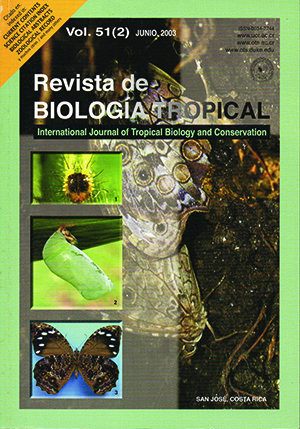Abstract
In this paper we describe the feeding habits of the Red snapper (Lutjanus peru) in the southern coast
of Guerrero state, Mexico. This data could be relevant to local fisheries management. In total 385 full stomachs
(206 from females and 179 from males) were collected monthly in 1993 and 1994, from commercial catches.
Stomach contents were identified to species level when possible. Food items were grouped into taxonomically
coherent groups, and their numbers, weight and frequency of occurrence obtained. The index of relative importance
(IRI) was calculated for the total sample, by month, sex and size class. In 1993, a total of 42 different food
items were obtained, and 43 in 1994. Food items consisted of fishes, crustaceans, and mollusks. The grouping
of prey species, genera, or families rendered 14 food groups, as follows: Mollusks, Amphipods, Copepods,
Stomatopods, Penaeus vannamei, Brachiuran Larvae, Stomatopods Larvae, Family Albuneidae Larvae, Other
crustaceans, Anchoa ischana, Anchoa lucida, Other fishes, Salps and Unidentified organic matter. Anchoa
ischana dominated the trophic spectrum in both years. Although, Amphipods, Anchoa lucida and Other fishes
had important indexes in 1994. There was high variability in the diet composition by month. Nevertheless, in
1993, from February to August, crustaceans as a whole dominated the diet. In 1994, crustaceans only dominated
in March and August. No differences in food habits were found between immature fish, males and females.
The diet of the Red snapper varies as they grow, although the same food groups are found always. At the adult
phase, in length classes over 261 mm FL, there is some degree of specialization, as they consume more fish, particularly
engraulids.
Comments

This work is licensed under a Creative Commons Attribution 4.0 International License.
Copyright (c) 2003 Revista de Biología Tropical


